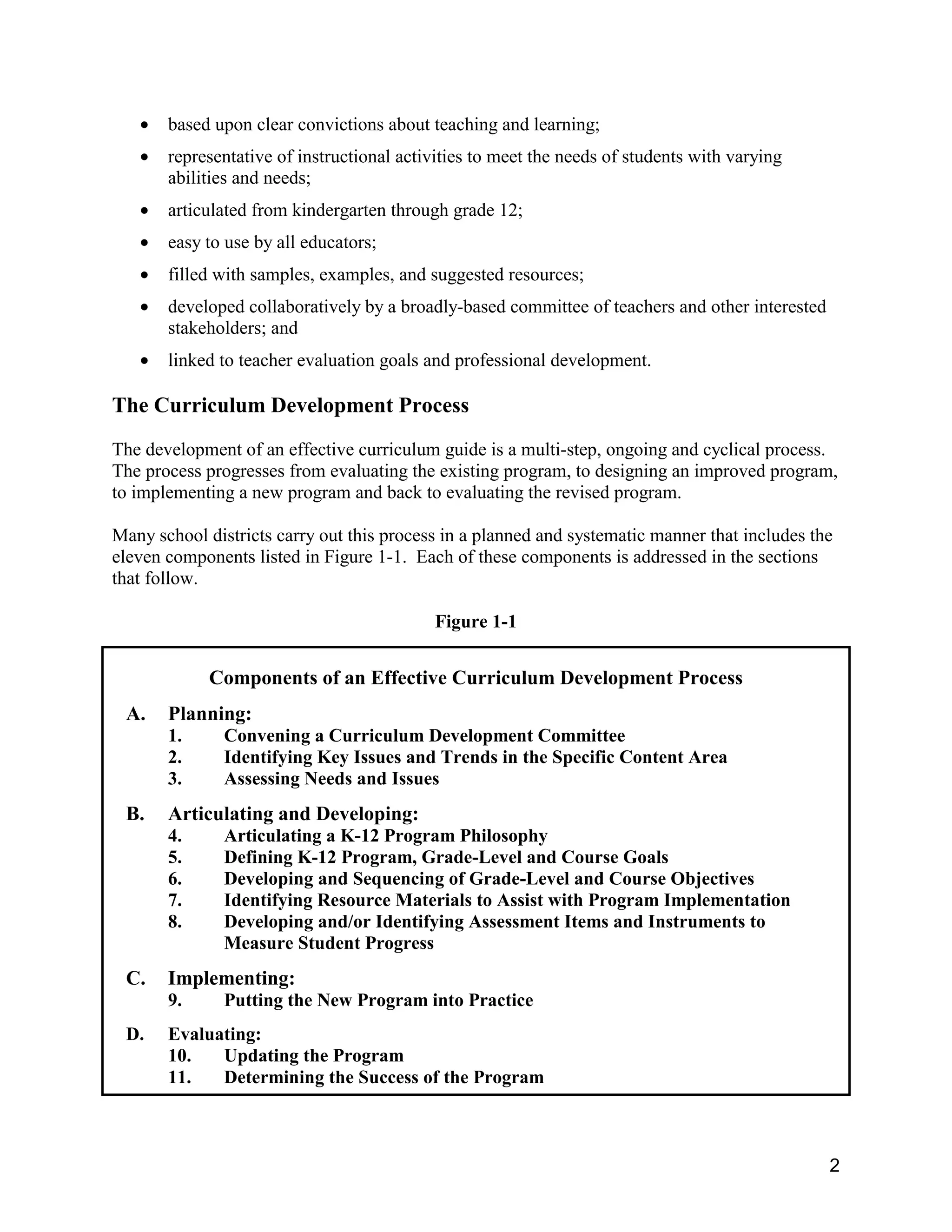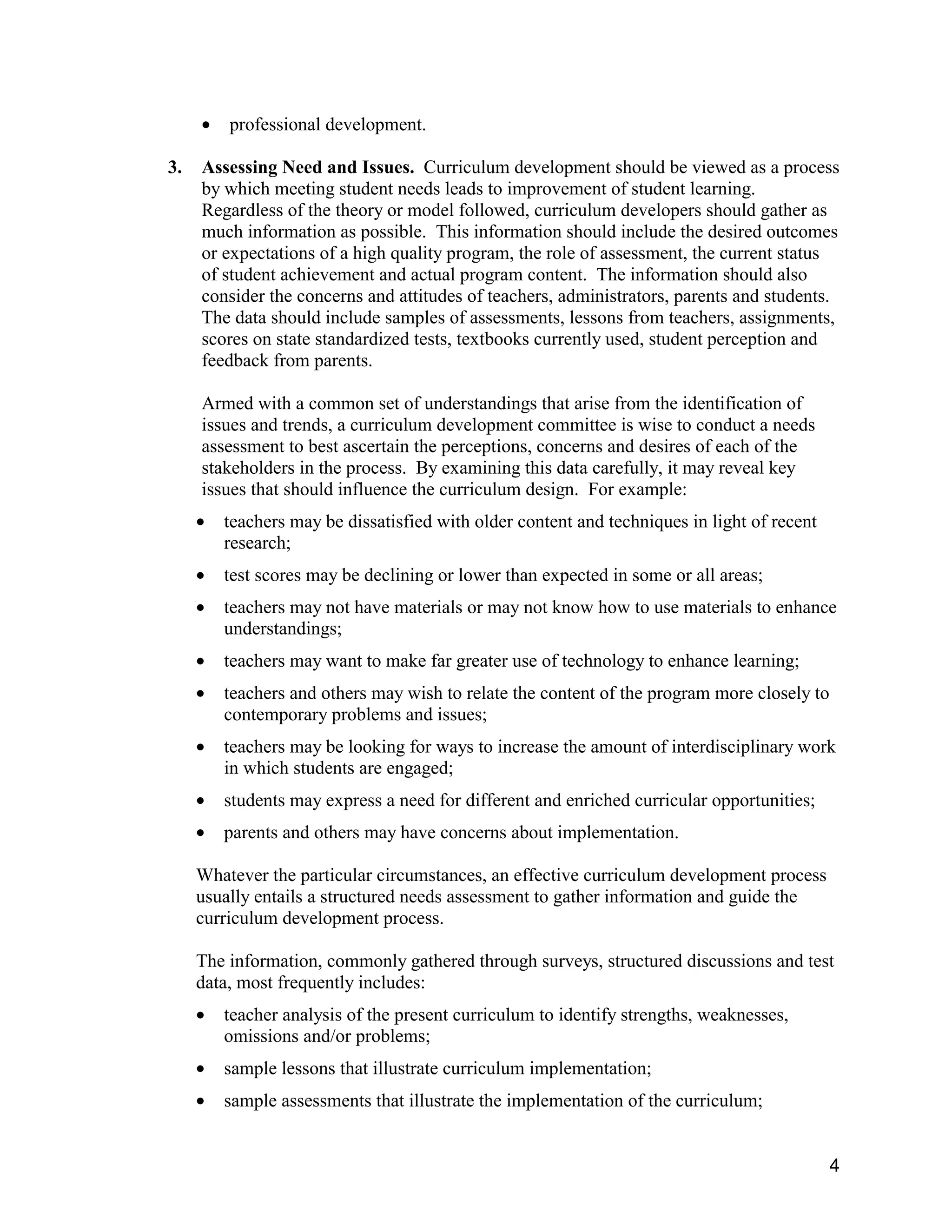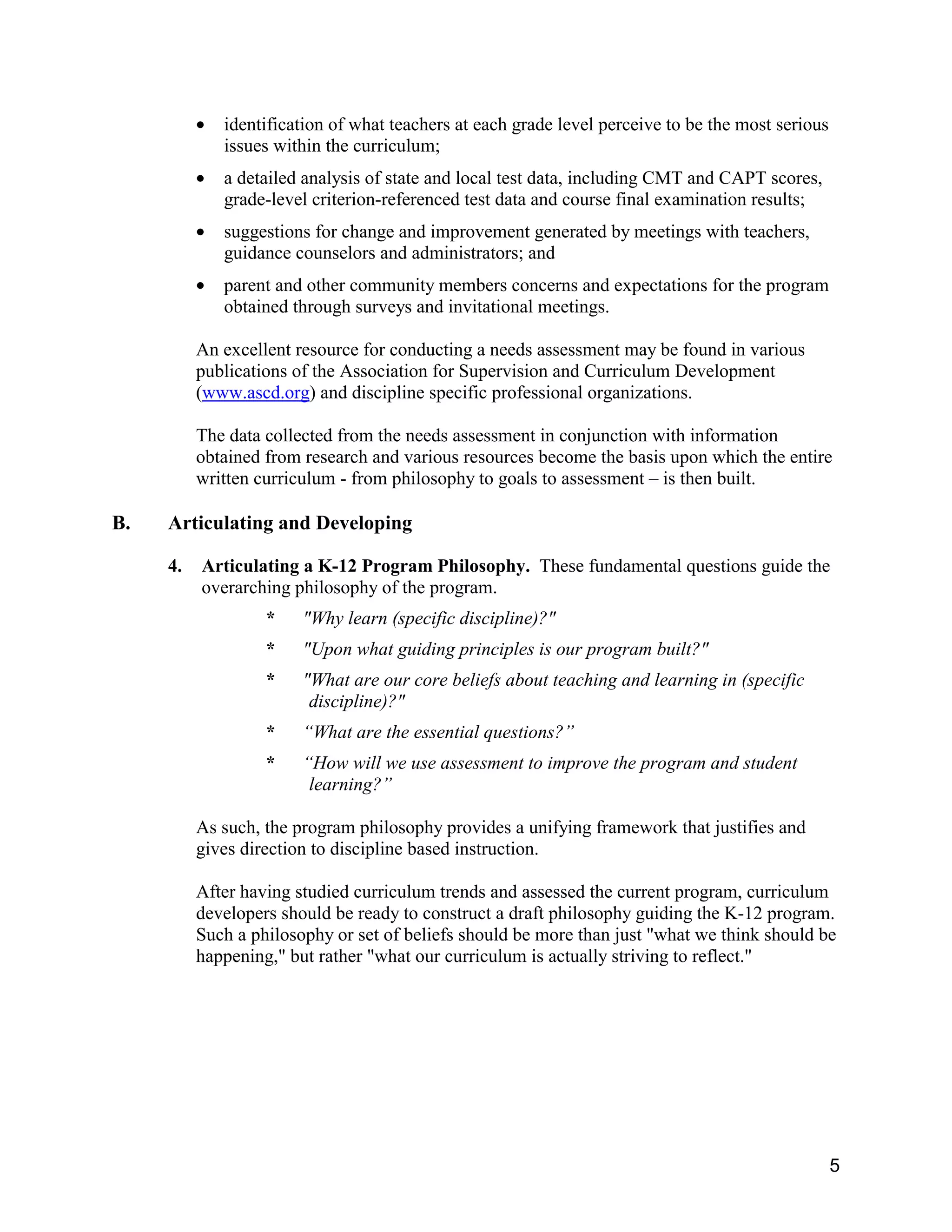This document provides an overview of the curriculum development process and outlines 11 key components:
1. A curriculum development committee plans the process and guides implementation.
2. Research identifies issues and trends to inform a needs assessment gathering teacher, student, and community perspectives.
3. A philosophy and goals are articulated to guide the program aligned with research, needs, and standards.
4. Objectives are developed and sequenced to specify expectations at each grade level.
5. Resources are identified to support teaching objectives.
6. Assessments are developed to measure student achievement of objectives.
7. The new program is implemented with support for teachers.
8. The program is continuously updated and improved through evaluation.










